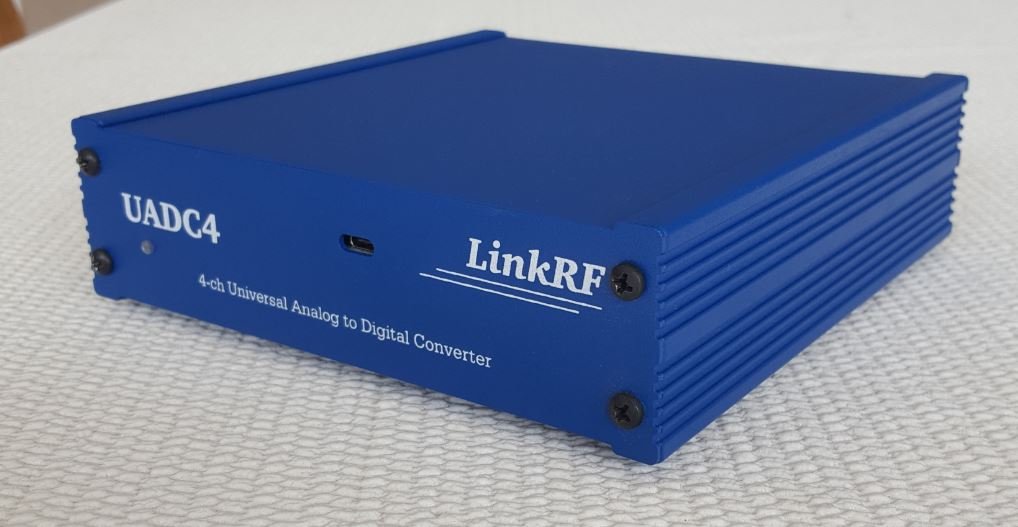In the realm of amateur radio and weak signal communication, linkRF stands out as a name synonymous with innovation and high-performance equipment. For enthusiasts seeking to push the boundaries of their reception capabilities, linkRF offers a range of meticulously designed products that elevate the user experience. This article delves into the world of linkRF, exploring its product offerings, the underlying technology, and its significance for the radio enthusiast community.
The Need for Specialized Equipment
Traditionally, amateur radio operators have relied on PC sound cards for Analog-to-Digital Conversion (ADC) in Software Defined Radio (SDR) applications. However, these sound cards are primarily designed for music playback, not the demanding requirements of SDR. They introduce limitations in terms of dynamic range, sampling rate, and overall signal fidelity. This restricts the ability to effectively receive weak signals, a crucial aspect in communication over long distances or under challenging propagation conditions.
Introducing linkRF: Revolutionizing the SDR Experience
linkRF addresses this very limitation by providing specialized hardware specifically designed for SDR applications. Their products bypass the shortcomings of PC sound cards, offering superior performance and unlocking the full potential of SDR technology for amateur radio enthusiasts and weak signal communicators.
Products for Every Need
linkRF boasts a range of products catering to diverse user requirements. Here’s a closer look at some of their prominent offerings:
-
UADC4: This high-performance Analog-to-Digital Converter boasts exceptional dynamic range and sampling rates, exceeding the capabilities of any PC sound card. Designed with meticulous attention to detail, the UADC4 eliminates the bottlenecks inherent in traditional sound cards, allowing users to capture weak signals with unparalleled clarity.
-
IQ+: This ingenious device essentially functions as two independent receivers in one unit. Each receiver features dedicated antenna inputs and delivers separate audio outputs in IQ (In-phase and Quadrature) format. Notably, both receivers share a synchronized Local Oscillator (LO), ensuring identical amplitude and phase characteristics – a critical requirement for advanced signal processing techniques like Adaptive Polarization. The IQ+ seamlessly integrates with audio cards like Delta44 for efficient A/D conversion and further processing within software like Linrad.
-
LinkRF Modules: linkRF offers a range of modular solutions for specific applications. For instance, the ROF-1-ORX-S is an outdoor, single-input RF amplifier module designed to enhance signal strength while maintaining excellent noise figure and linearity. These modules provide flexibility for enthusiasts to customize their SDR setups based on their specific needs.
The Technology Behind the Performance
linkRF’s success lies in its meticulous engineering approach. Their devices leverage high-quality components and innovative design principles to achieve exceptional performance. Here are some key technological aspects that contribute to their effectiveness:
-
High-Resolution ADCs: linkRF products employ high-resolution Analog-to-Digital Converters (ADCs) with superior bit depth and sampling rates compared to PC sound cards. This translates to a wider dynamic range, capturing a broader spectrum of signal strengths without distortion.
-
Low-Noise Design: Rigorous attention is paid to minimizing noise within the circuits. This ensures that the delicate radio signals are not masked by internal electronic noise, allowing for the reception of even the faintest signals.
-
Precision Clocking: Accurate and stable clocking is paramount for accurate signal conversion. linkRF devices utilize high-quality clock sources to guarantee precise sampling and minimize jitter, which can introduce artifacts in the digitized signal.
The Impact on Amateur Radio
linkRF’s advancements have had a significant impact on the amateur radio community. Here’s how their products empower enthusiasts:
-
Enhanced Weak Signal Reception: With superior dynamic range and low-noise design, linkRF equipment allows users to receive weak signals that would otherwise be buried in the noise floor using traditional sound cards. This opens doors for communication over longer distances, particularly in challenging propagation conditions like EME (Earth-Moon-Earth) communication.
-
Improved Signal Processing Capabilities: The high-fidelity data captured by linkRF devices provides a better foundation for advanced signal processing techniques. This empowers users to extract weak signals from noisy environments, decode complex modulation schemes, and perform in-depth analysis of received signals.
-
Greater Experimentation and Innovation: The superior performance of linkRF products unlocks a wider range of possibilities for experimentation and innovation. Enthusiasts can explore new frontiers in weak signal communication, push the boundaries of SDR technology, and contribute to the advancement of the field.
Conclusion
linkRF stands as a testament to the power of specialized hardware in unlocking the full potential of SDR technology. Their meticulously designed products empower amateur radio enthusiasts and weak signal communicators by providing exceptional performance, pushing the boundaries of signal reception and processing capabilities.
